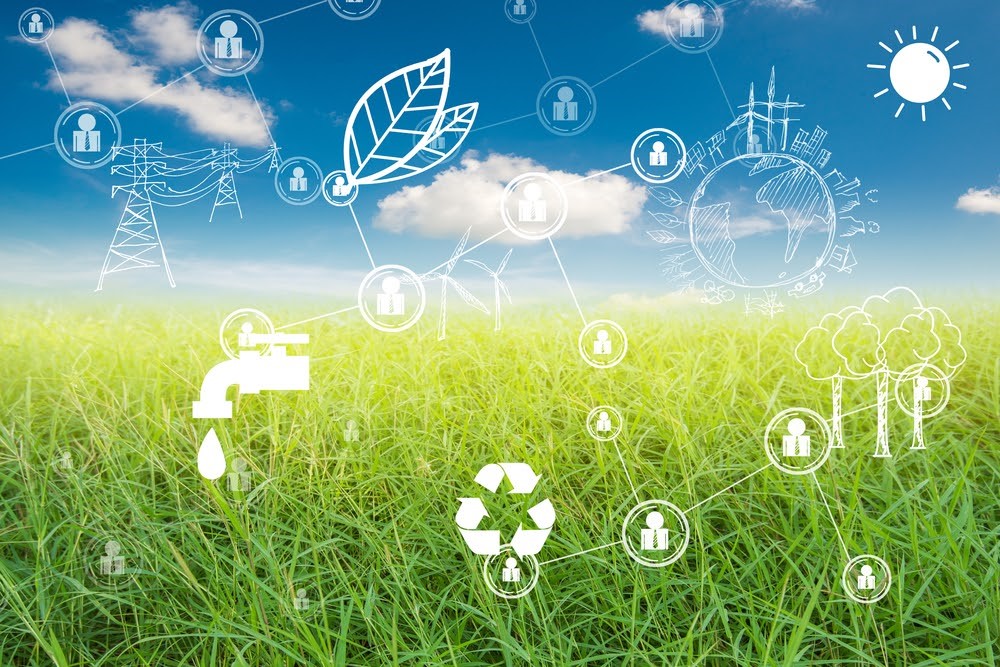As greenhouse gas emissions continue to stand as a major threat to the climate, the United Nations launched a Net Zero initiative. By the year 2030, there’s a goal to decrease gas emissions to zero. In order to make that happen, a circular economy is essential. A circular economy basically revolves around the ability to reduce, reuse and recycle. In order to make this happen, it’s important to break down the details of the supply chains in various industries. Take a look at six industries that can merge circular economic practices in order to achieve the Net Zero 2030 goal.
Agricultural Industry
Agriculture is essential for human survival. However, the methods used to maintain mass production of livestock and crops can be improved to support a circular economy. According to a European study conducted in 2017, Europe produces 1.3 billion tons of waste each year. Approximately 700 million tons come from the agricultural industry. One of the ways that supply chain management can merge with a circular economic plan involves reusing water. The water that’s used in domestic and agricultural contexts can be treated correctly in order to water plants and facilitate crop production.
Biofertilizer is another opportunity to use organic waste and recycle it for farming. Organic waste is usually made up of items like food waste, leaves, weeds and animal waste. Studies point to how cost-effective this method is as well. It’s also a healthier option to replace the fertilizers that are filled with harmful pesticides and more.
Energy Sector
Electricity, oil and gas all fall under the energy sector. It’s very difficult to function in a modern society without access to these energy sources. However, everything from fuel extraction to distribution can afford a supply chain overhaul in order to support a circular economy.
Solar energy and wind energy are considered some of the more favorable options to support a circular economy. They’re excellent options because unlike fossil fuels, they are renewable and sustainable. Even though fossil fuels are seemingly linear, many companies are looking for ways to create circularity within their supply chain. One example is the ability to practice used oil recycling. This process takes small-scale used oil waste and turns it into diesel fuel.
When you’re looking at practical ways to quickly reduce the negative impact of global warming, it’s best to look at reducing methane emissions. However, many supply chain companies can actually make a lot of headway in this goal by adopting better practices within the dairy industry. Anaerobic digesters break down manure. They’re also very effective in reducing the production of methane emissions. If supply chain companies provide anaerobic digesters to more farms, this process can have an incredibly powerful impact on the environment.
Fashion Industry
The concept of fast fashion currently plagues the fashion industry as one of the main reasons why it’s such a major contributor to landfills around the globe. Even with resellers making full-time careers with used goods, there’s still too much clothing for the United States to hold. It’s shipped to other countries and sits in landfills. The average person wears an item seven times before they get rid of it.
One of the ways to change this process is by encouraging people to get more wear out of their garments. It’s also important to create textiles that are recyclable and reusable. When textiles become reusable and multipurpose, this falls in line with the goal of creating a circular economy.
Tech Industry
Apple is one of the biggest companies in the world. However, it’s known that their products aren’t the easiest to dispose of. To make matters worse, the materials aren’t easy to recycle, either. While there are companies that provide refurbished forms of technology (and that is helpful), it’s time for better initiatives that include the materials used to create items like earbuds and more. If people don’t know how to recycle or properly dispose of their electronics, they’ll only end up contributing to pollution in detrimental ways.
The supply chain management protocols need to start with the companies. If the companies include a loop in the supply chain that retrieves the old, used products from their customers, this can help promote more reusability. When businesses can use more sustainable materials to produce devices that are easier to recycle, this also helps close the loop and keep the economy circular within the tech industry.
Healthcare Industry
For many people, the concept of a circular economy within the healthcare industry gives room for pause. This is because most people desire single-time usage with their devices and other medical tools. If someone else used a specific device like an EP catheter, this can seemingly lead to an increase in the passing of infections. However, there are ways to lessen the impact of a linear economy within the healthcare system. It simply involves finding new ways to properly clean, sterilize and sanitize the devices for additional uses. Most hospitals refer to this as single-use device reprocessing.
The hospitals that use this method are able to save a significant amount of money as well. Because the single-use mindset is pervasive in the United States, it will take many hospitals time to adjust. However, in order to keep the supply chain going in a sustainable and cost-effective way, hospitals need to adopt this method sooner rather than later.
Cosmetics Industry
Because this industry is notorious for its linear model as it pertains to products and consumption, it contributes 100 billion units of waste each year. To reduce the amount of waste, beauty companies have been making shifts within product creation, containers and distribution as well. More beauty companies continue to adopt better packaging practices with recyclable paper, bags and shipping boxes. If you purchase subscription services with certain beauty brands, they’ll make the first shipment in a glass bottle that’s reusable. Once the consumer receives that first shipment, the following shipments will be refills to reduce the amount of waste involved.
Partnerships with other companies in other industries will be key as well. This is especially true between the cosmetics industry and the agricultural industry. A lot of beauty products contain natural ingredients. By partnering with local farms and other agricultural producers, beauty companies can gather the leftover produce and use the ingredients in beauty products.
Final Thoughts
While each individual can do their part to reduce, reuse and recycle, a major shift needs to take place within major industries like these six. There are practical and sustainable solutions these industries can take that can save the planet, increase profits and make much-needed changes.
About the author

Nicolle Portilla, RTS
Nicolle is RTS’s Social Media Manager, and has been a valued member of the team since July 2018. She is responsible for content creation on all platforms, leveraging creative software, industry trends and research, and social media strategy to build upon the company’s online presence. Additionally, Nicolle contributes to the RTS blog, which serves to educate clients and industry players about our technology and sustainability efforts, and is responsible for the creation and dissemination of our internal and external newsletters.
Prior to taking on the role of Social Media Manager, Nicolle served on the Sustainability team for nearly three years, assisting clients in achieving their sustainability goals through external communications and event organizing. Preceding Nicolle’s time on the RTS team is her work with Clean Water Action, where she promoted clean water initiatives. Nicolle graduated from Stony Brook University in 2018 with a B.A. in Sustainability.

